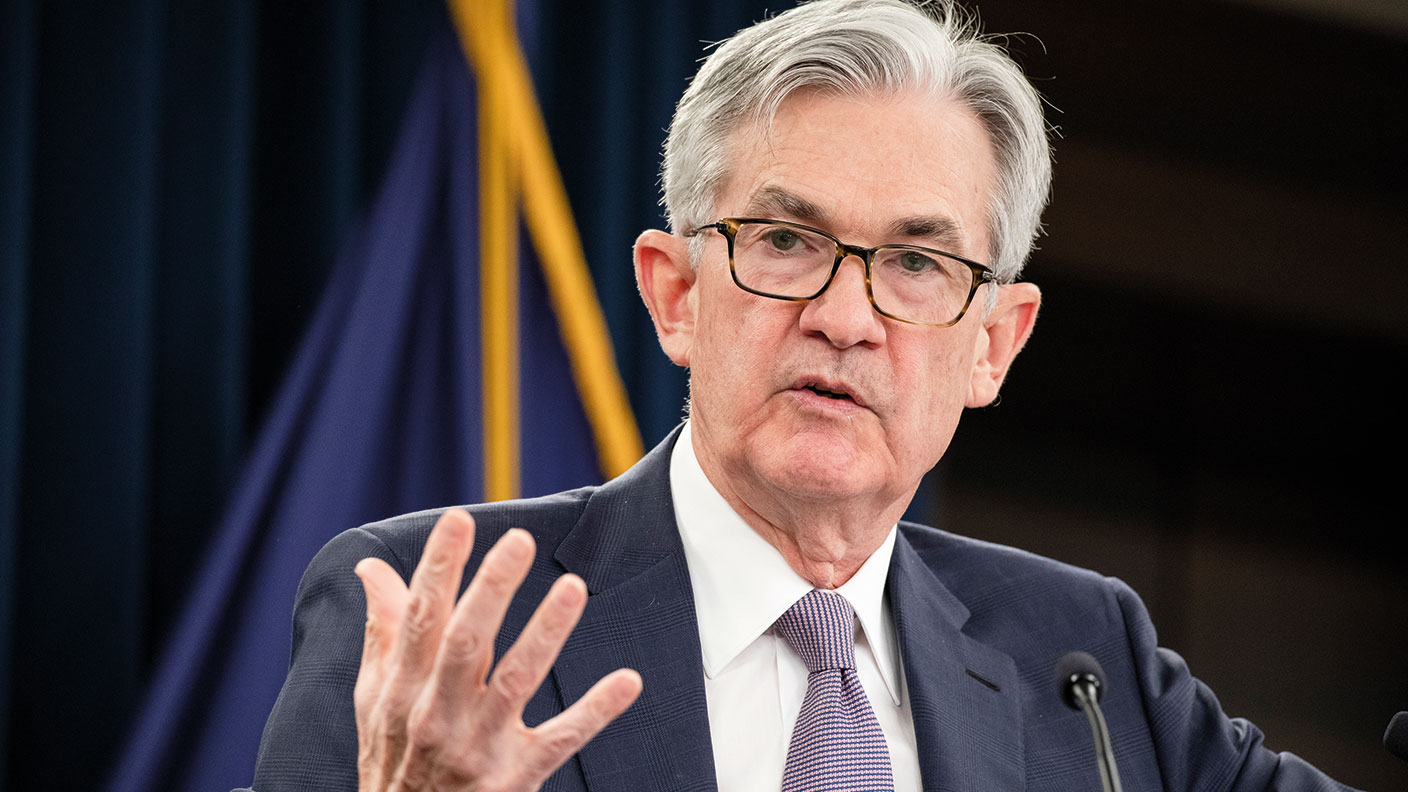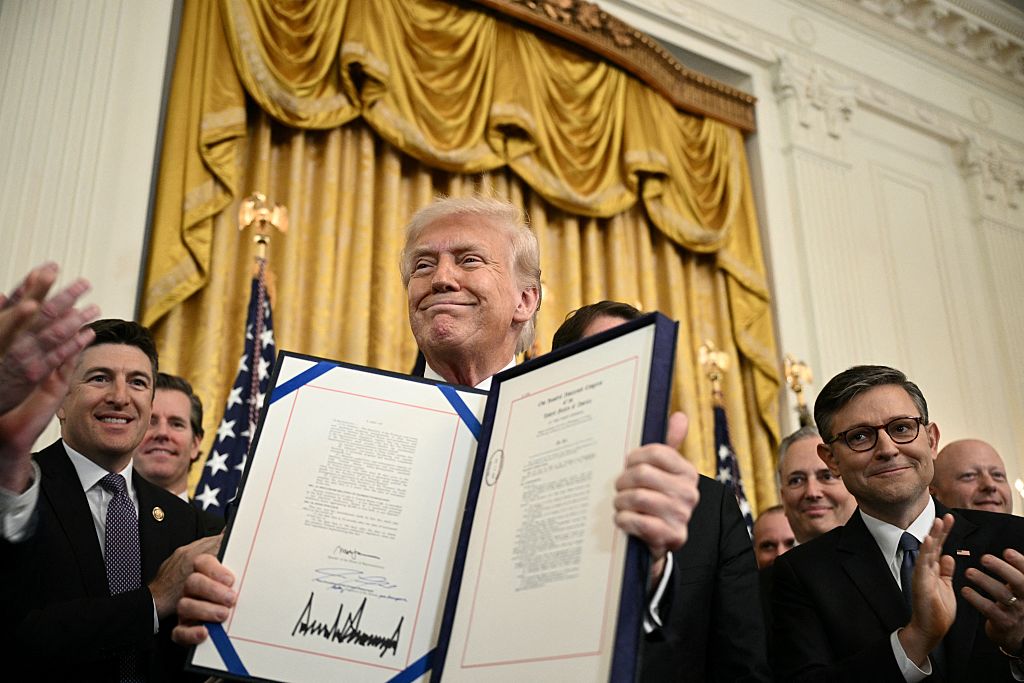Jerome Powell’s pivotal moment in monetary policy history
The Federal Reserve – America's central bank – has said that its inflation target of 2% will now be a long-term average, rather than a rate to be hit at all times.


Jerome Powell, the chair of the US Federal Reserve, has just presided over a “pivotal moment” in monetary-policy history, says John Authers on Bloomberg. Last week, Powell announced that the central bank’s inflation target of 2% will now be a long-term average, rather than the rate that the Fed is aiming to hit at all times. And it will no longer tighten policy when employment is above what economists thinks is the maximum level the economy can take without overheating, unless it sees other signs of inflationary pressures.
For now, the idea that the Fed “will let inflation go a bit above 2% if necessary sounds like wishful thinking”. In this deflationary environment, conventional monetary policy is proving useless and “there was no detail on how the Fed will get inflation above 2% and keep it there”. Yet for all that, it feels as if Powell is ending “four decades of orthodoxy since Paul Volcker took over the Fed and showed he was prepared to raise rates even if it crushed employment”.
A missed chance to be radical
Not so fast, says The Economist. It’s true that these changes may be “the most consequential adjustment to the conduct of monetary policy since the early 1980s”, but for now they look “disappointingly incremental” rather than “transformative”. The Fed has restored jobs as an equal priority alongside prices, but it has “stopped short of committing itself to a more aggressively reflationary framework” that would allow inflation to rise more “in pursuit of full employment”. With interest rates already at zero, Powell’s new strategy could amount to “little more than a promise not to counteract any government efforts to boost growth using fiscal stimulus”. Given “the bleak outlook for the American economy” and the “low risk of embracing a more radical overhaul”, this “feels like an opportunity missed”.
MoneyWeek
Subscribe to MoneyWeek today and get your first six magazine issues absolutely FREE

Sign up to Money Morning
Don't miss the latest investment and personal finances news, market analysis, plus money-saving tips with our free twice-daily newsletter
Don't miss the latest investment and personal finances news, market analysis, plus money-saving tips with our free twice-daily newsletter
Legacy of instability
The central bank wasn’t going to raise rates in the middle of a global recession, so the immediate impact is modest, agrees Swaha Pattanaik on Breakingviews. But “the new framework will outlast the pandemic”. Crucially, “other central banks will follow where the Fed leads” – and the way that this is leading is “ultra-easy policy more of the time”.
For three decades, monetary policymakers have treated stable price inflation as “their best contribution to economic prosperity”. Yet during that time, expansions have been more likely to end in “episodes of financial instability rather than runaway inflation”, as Powell himself acknowledged in his speech. This will turn out be the “Achilles heel” of the Fed’s new approach. “Protracted periods of extremely low interest rates and easy money imply more financial-market booms and busts.”
Get the latest financial news, insights and expert analysis from our award-winning MoneyWeek team, to help you understand what really matters when it comes to your finances.
Cris Sholto Heaton is an investment analyst and writer who has been contributing to MoneyWeek since 2006 and was managing editor of the magazine between 2016 and 2018. He is especially interested in international investing, believing many investors still focus too much on their home markets and that it pays to take advantage of all the opportunities the world offers. He often writes about Asian equities, international income and global asset allocation.
Cris began his career in financial services consultancy at PwC and Lane Clark & Peacock, before an abrupt change of direction into oil, gas and energy at Petroleum Economist and Platts and subsequently into investment research and writing. In addition to his articles for MoneyWeek, he also works with a number of asset managers, consultancies and financial information providers.
He holds the Chartered Financial Analyst designation and the Investment Management Certificate, as well as degrees in finance and mathematics. He has also studied acting, film-making and photography, and strongly suspects that an awareness of what makes a compelling story is just as important for understanding markets as any amount of qualifications.
-
 The shape of yields to come
The shape of yields to comeCentral banks are likely to buy up short-term bonds to keep debt costs down for governments
-
 The sad decline of investment clubs – and what comes next
The sad decline of investment clubs – and what comes nextOpinion Financial regulation and rising costs are killing off investment clubs that once used to be an enjoyable hobby, says David Prosser
-
 Market predictions for 2026: Will Dubai introduce an income tax?
Market predictions for 2026: Will Dubai introduce an income tax?Opinion My 2026 predictions, from a supermarket merger to Dubai introducing an income tax and Britain’s journey back to the 1970s
-
 The steady rise of stablecoins
The steady rise of stablecoinsInnovations in cryptocurrency have created stablecoins, a new form of money. Trump is an enthusiastic supporter, but its benefits are not yet clear
-
 Goodwin: A superlative British manufacturer to buy now
Goodwin: A superlative British manufacturer to buy nowVeteran engineering group Goodwin has created a new profit engine. But following its tremendous run, can investors still afford the shares?
-
 A change in leadership: Is US stock market exceptionalism over?
A change in leadership: Is US stock market exceptionalism over?US stocks trailed the rest of the world in 2025. Is this a sign that a long-overdue shift is underway?
-
 Modern Monetary Theory and the return of magical thinking
Modern Monetary Theory and the return of magical thinkingThe Modern Monetary Theory is back in fashion again. How worried should we be?
-
 Metals and AI power emerging markets
Metals and AI power emerging marketsThis year’s big emerging market winners have tended to offer exposure to one of 2025’s two winning trends – AI-focused tech and the global metals rally
-
 King Copper’s reign will continue – here's why
King Copper’s reign will continue – here's whyFor all the talk of copper shortage, the metal is actually in surplus globally this year and should be next year, too
-
 The coming collapse in the jobs market
The coming collapse in the jobs marketOpinion Once the Employment Bill becomes law, expect a full-scale collapse in hiring, says Matthew Lynn
